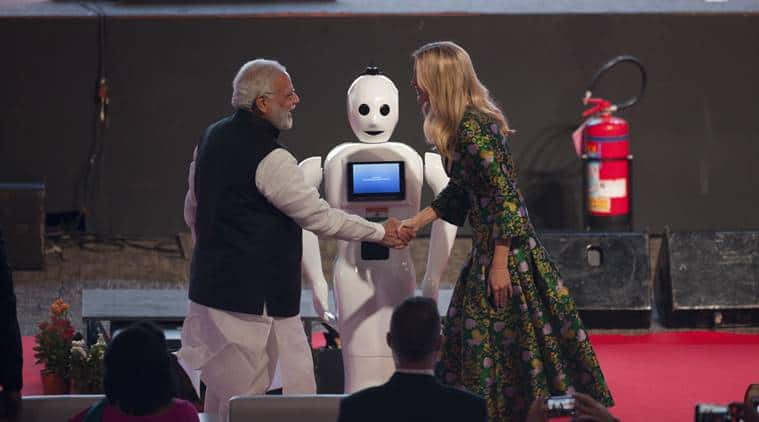Robotics being a rapidly growing field of technology, also hold its place amongst the top cutting-edge technologies.
The word automation has given rise to the world of robotics. The knowledge and kinds of technologies that go into building robots make it an interdisciplinary area for exploration.
Initially, when robots were built it was completely based on mechanics, but with the new inventions in technology, robots are now able to learn by themselves using machine learning.
To build a complete working robot it requires mechanical knowledge to build its working parts, electrical knowledge to connect the parts and power the system and finally computer science knowledge to program the working.
Robots are built with a vision to replace human load and perform repetitive tasks with efficiency. Industries and manufacturing units are more benefitted by the robotic technology because most of the mass manufacturing industries perform repetitive tasks in a very large scale and to attain efficiency in the work performed it is necessary to build effective systems that perform tasks with precision.
Some of the main characteristics that a robot is expected to exhibit are:
1. Precision
Since machines can perform tasks at any level of granularity, they are expected to perform with accuracy. Some of the robots used in textile manufacturing industries are expected to exhibit 99-100 percent precision.
But those used as chatbots or personal assistants are expected to provide only 75-80 percent of precision. The precision achieved varies from application to application.
2. Efficiency
Another important factor to be considered while building robots is efficiency. Robots should be able to perform tasks in a much larger rate compared to humans and should be able to do it without human intervention.
For example, a robot that builds automobile parts will be able to build with a rate of a hundred or two hundred compared to humans.
3. Adaptability
A system that is built in a location will have to operate in a different location. It is necessary to build robots that work in any circumstance or location.
Robotics has a huge application base, which means it has its applications in almost every discipline. From agriculture to the military, it spans a wide range of inventions that have created revolutions.
The agriculture field has just started to see the use of robots for various purposes that ease the tasks of farmers. Robots that mock humans were a huge challenge to robotic technology a decade ago. But today, there are several robots that perform many tasks that humans can perform with utmost efficiency.
Mitra robot is a well-known Indian humanoid robot that was built by Invento Robotics in Bangalore. It performs tasks like greeting people, assisting with any queries, navigation, etc.
Building such a system involves technologies from different disciplines. In-depth understanding of machine language and natural language processing is required to program such robots.
On a single charge, the Mitra robot can function up to 8-10 hours. This is achieved through electrical technologies and parts manufactured for the robot come under mechanical engineering. Mitra clearly stands as an example of robotics being an interdisciplinary technology.
The growing revolutions in the field of robotics are due to inventions made by engineers. Robotics is an interdisciplinary course that is offered in the engineering field.
Many colleges across India offer robotics as a full-time course with a curriculum consisting of all topics from various disciplines. Bangalore is a hub for technology, many engineering colleges in Bangalore are offering Robotics as a course with an aim to train talented engineers to develop new machines that help humans in various ways.
